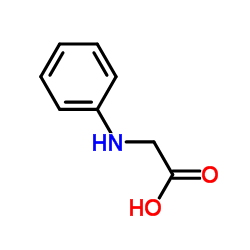Chiral separation of racemic phenylglycines in thermolysin crystal: a molecular simulation study.
Zhongqiao Hu, Jianwen Jiang
Index: J. Phys. Chem. B 113(48) , 15851-7, (2009)
Full Text: HTML
Abstract
A microscopic understanding of chiral separation mechanisms in liquid chromatography is significant in the pharmaceutical industry to facilitate the rational design of novel stationary phases and the optimization of separation processes. A molecular simulation study is reported to investigate the chiral separation of racemic D/L-phenylglycines. Thermolysin crystal and water act as the chiral stationary phase and the mobile phase, respectively. D-phenylglycine is observed to transport more slowly than L-phenylglycine, in accord with experimentally observed elution order. A slower flowing rate of the mobile phase enhances separation efficacy. From the energetic and structural analysis, it is found that D-phenylglycine interacts more strongly with thermolysin than L-phenylglycine; consequently, it stays more proximally to thermolysin for a longer time. The chiral discrimination of D/L-phenylglycines is attributed to the collective contribution from the chiral centers of thermolysin residues. This study suggests that, as a bionanoporous material, thermolysin has enantioselectivity capability and demonstrates the feasibility of molecular simulations in mimicking enantioseparation processes and probing underlying mechanisms.
Related Compounds
| Structure | Name/CAS No. | Molecular Formula | Articles |
|---|---|---|---|
 |
N-Phenylglycine
CAS:103-01-5 |
C8H9NO2 |
|
Analyte-induced photoreduction method for visual and colorim...
2015-06-16 [Anal. Chim. Acta 879 , 111-7, (2015)] |
|
Notch2 controls prolactin and insulin-like growth factor bin...
2014-01-01 [PLoS ONE 9(11) , e112723, (2014)] |
|
Notch signaling governs phenotypic modulation of smooth musc...
2014-11-01 [Vascul. Pharmacol. 63(2) , 88-96, (2015)] |
|
Asymmetric strecker synthesis of alpha-amino acids via a cry...
2001-04-19 [Org. Lett. 3(8) , 1121-4, (2001)] |
|
Oncogenic deregulation of NKL homeobox gene MSX1 in mantle c...
2014-08-01 [Leuk. Lymphoma 55(8) , 1893-903, (2014)] |